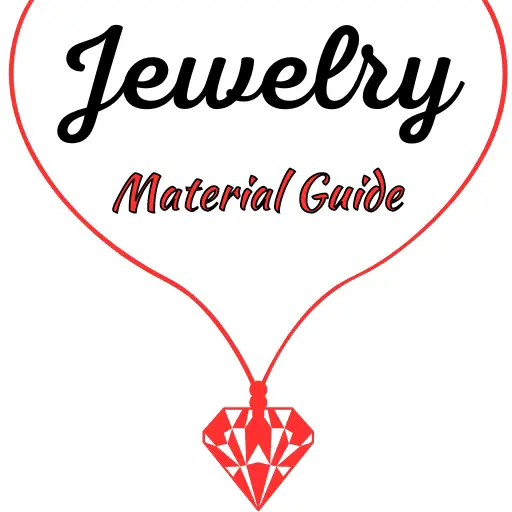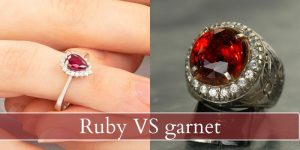Rectangular diamond cuts are a nice way to step away from the round brilliant classic, and they offer some really beautiful diamond cuts to consider. Two of these rectangular cuts are the princess and the radiant. Both are beautiful, brilliant cuts but they offer different looks and choosing between them can get difficult. So today we’re comparing these two diamond cuts so you can make an informed decision.
Princess vs radiant cut diamonds
Princess cut diamonds have sharp 90 degree corners while radiant cuts have truncated corners. The radiant cut diamond is usually an elongated rectangle, while the princess is a perfect square. A princess cut offers a neat sparkle, with long, thin flashes of light while the radiant leans towards that crushed ice look many prefer. Both are very good at hiding imperfections, and they are priced nearly the same, so you get a lot of sparkle for both.
What is a princess cut ?
The princess cut is a brilliant diamond cut invented in 1960 by Arpad Nagy, although there is also the Barion cut (by Basil Watermeyer in 1971) which is credited as either its predecessor or direct inspiration. In whichever case this diamond cut is relatively new, compared to other cuts like the round brilliant.
A princess cut is a 1:1 square, with a series of chevron facets on the pavilion and perfectly square, 90 degree corners on the girdle. This cut has several variations, including extra facets on the pavilion, and different styles of cutting the crown. The general consensus is that a princess cut is pretty much a squared round brilliant in terms of look, though the facets look different but the sparkle factor is comparable.
Read also: Do Diamonds Come From Coal ?

What is a radiant cut ?
The radiant cut is an elongated rectangle brilliant cut, with truncated corners just like the ones on an emerald cut. These diamonds have more of a classic brilliant cut, their facets are not as geometric or mirrored as a princess cut, so their overall look is more similar to crushed ice.
There are those who say that the radiant cut is just a princess cut with the corners cut off. That is not only not true, it’s also very wrong. The facets on a radiant cut are very different, and are not chevrons. This influences the final light performance of the radiant.
The radiant cut is also relatively new, as it first came about 1977 when Henry Grossbard though the emerald cut needed more sparkle, and decide to make a step-cut and brilliant hybrid. The radiant was perfected in 1981 and has become quite popular since then. The usual L/W ratio for radiants is 1.25:1
1. Radiant cuts tend to be elongated, princess cuts are squared
Both radiant and princess cuts are rectangle diamond shapes, but their traditional or common forms are 1:1 square for princess cuts and 1.25:1 for radiants. There are also 1:1 radiants but the elongated ones are the easier to find.
So if you’re looking for something very different from the traditional round brilliant, an elongated radiant will provide that look, as well as the princess cut. It’s just that the princess cut offers a perfect, sharp square while the radiant offers a shape like the emerald cut.
If you’re looking to really shake things up, try an elongated radiant in an East-West setting, or a princess cut with a diagonal setting.
2. Princess cuts have sharp corners. radiants have truncated corners
A key way to distinguish between a princess cut and a radiant cut is the corners., The princess cut has sharp 90 degree corners and the radiant has truncated corners, aside from the different L/W ratio.
Because of those sharp corners, you need to consider your ring setting before settling for a princess cut. A diamond does not scratch but it can chip if hit in its weak point, which just happens to be any sharp edge. Princess cuts have 4 sharp corners and if you ware unfortunate enough to hit those, you might end up with a chipped diamond.
So it’s best to set your princess in a prong setting that covers all 4 corners, or a very delicate bezel setting. Or a combination of both, a prong setting with a high gallery that is actually a bezel setting.
Radiant cuts are easier in this regard, as they can be set in any way you like and won’t provide a sharp corner or weak point for the diamond. Any setting will do, but the most common is a simple 4 prong setting, one over each corner.
3. Radiant cut diamonds have a crushed ice look, princess cuts look splintery
If you’re particular about the way your diamond will look, you’ll be interested to know that the radiant cut offers more of a crushed ice look due to the way its pavilion facets are cut. The very center of the diamond has clearly defined chunky facets, which then fade into crushed ice towards the edges of the diamond.

The princess cut has rows of chevron facets on its pavilion, which get thinner as they all come to a point in each corner of the diamond. The overall look is splintery, or banded if you will. In our opinion a princess cut is what a step-cut would look like if it tried real hard to be sparkly like a brilliant. The princess cut has rows of neat facets that mirror each other, but at an angle, allowing for more scintillation but you can still see the facets more clearly than in other brilliant cuts.
A princess cut’s corners will offer very small flashes of light, as the facets are very small and thin there, much like they would be in a pear cut and marquise cut‘s point.
4. Princess cut diamonds tend to have more brilliance, radiant cuts more fire
Both princess and radiant cuts sparkle, and they will both be impressive as solitaires on an engagement ring. However if you want to compare the two, at least in their traditional cuts, the radiant has more facets (traditionally 70) than the classic princes cut (traditionally 57). More facets mean the light is broken into more pieces, which usually results in more fire (rainbow colors) than brilliance (white light).
That being said, both the princess and the radiant offer fire and brilliance. The radiant will offer slightly more fire, remember the crushed ice look. Then again, a diamond’s light performance is not something you can accurately gauge through reading. You need to inspect the diamond yourself, and compare a princess and a radiant of similar carat weight, cut quality, clarity, and color to get an accurate comparison.
5. Radiants tend to face up larger than princess cuts
Due to the way a radiant diamond is usually cut, it tends to appear larger than a princess cut diamond of the same carat weight. This is because a radiant cut carries most of its weight in length., not its center. It’s also a shallower cut (for its carat size) than a princess cut, which carries most of the weight in the pavilion.

There is also the fact that most radiant cuts are elongated and all elongated cuts appear larger than other cuts, simply because they are longer. So a radiant cut diamond will most likely look more impressive on the hand than a princess cut, at least in terms of size.
Similarities between princess and radiant cut diamonds
Despite all these differences between princess cuts and radiant cuts, there are two similarities that make choosing between them difficult. One way to look at these similarities is that whichever you choose, you will not lose our on value and aesthetic.
Princess and radiant cuts are similar in popularity and price
The princess cut is the second most popular diamond shape after the round brilliant, but it shares that popularity with the radiant. The radiant captures hearts with its elongated look and high sparkle, while the princess is a refreshing change from the usual round shape. And they’re quite similarly priced too!
We’ve look at two of the most reputable online diamond sellers, and searched for a princess and a radiant, 1.00 ct, E color, VVS1 clarity, and very good cut quality.
On JamesAllen.com the princess cut was between $8171.39 and $5311.56 while the radiant was between $6941.81 and $5132.42. On Bluenile.com the princess cut was between $8348.40 and $5749.33, while the radiant was $8810.55 – $5783.25.
These are very similar prices so you spend about as much for one as for the other and both are around 30% less than a round brilliant of the same specs.
Radiant and princess are both quite modern-looking
If you’re after a more modern-looking diamond then both the radiant and the princess will work just fine. They’re both rectangular, which will always be considered more of a modern look, compared to round, ovals, pears, and marquise.
The princess is more on the angular side, perhaps better suited for a minimalist look. Meanwhile the radiant offers a brilliant’s sparkle in a modern diamond’s shape so it could suit many styles.

I’m the main author for jewelrymaterialguide.com. I started this site after we did tons of research before our wedding and noticed that there is information about rings, jewelry, and so on that is really hard to find on the internet.






